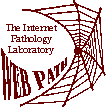|
A three-year-old boy lives in a very rural part of south Florida. His family is quite poor, so both of his parents (who dropped out of school in the seventh grade) have to work two jobs whenever they can. Because of this, the boy and his five siblings do not receive a great deal of attention, and their personal hygiene tends to be somewhat lacking. One day in late July the boy develops a series of red papules around his mouth and nose. By the next day, these papules have evolved into vesicles and pustules. Over the next 18-24 hours, the lesions start to break down, coalesce, and form thick, amber-colored, honeycomb-like crusts. The boy is not in pain and he doesn't really feel ill at all. Nevertheless, his face looks a little scary, and no one in the family has any idea of what the problem is or whether it might be contagious. As a result, it is decided that the boy's mother will take some time off from work and bring him to a local indigent clinic. The boy's vital signs are normal and there are no remarkable physical findings aside from the skin lesions.
Question 2.1: What is your diagnosis?
Several microbial skin diseases are associated with crusted lesions. However, the location of the lesions, the manner in which they developed, the amber color of the crusts, and the boy's age are all characteristic of nonbullous impetigo, a relatively superficial infection of the skin. In fact, the only other microbial skin lesions that might easily be confused with impetigo lesions are herpetic lesions, including those of orolabial herpes simplex (HSV-1) and those of chicken pox and zoster (VSV). However, herpetic lesions associated with herpes simplex or zoster generally appear as more discrete, grouped vesicles. Those associated with chicken pox, of course, are unlikely to be limited to the area around the mouth and nose.
Question 2.2: What tests should you perform?
The classic presentation of nonbullous impetigo seldom poses any serious diagnostic difficulties, so laboratory tests generally aren't necessary. If the clinical presentation is unclear, vesicle fluid can be Gram stained and cultured to confirm the diagnosis.
Question 2.3: What is the likely causative agent?
Nonbullous impetigo is caused by group A streptococci, primarily S. pyogenes. Culturing of the vesicle fluid often results in isolation of both S. pyogenes and Staphylococcus aureus. However, time-course studies have shown that streptococci alone are usually isolated early in the course of the disease, with S. aureus appearing later. These results imply that S. aureus merely invades the opening in the skin caused by S. pyogenes and initiates a secondary infection. On the other hand, S. aureus does produce a different form of impetigo known as bullous impetigo. Bullous impetigo typically produces more extensive, rapidly enlarging bullous lesions (vesicles filled with thin fluid) that break down and leave thin, paper-like crusts (rather than the thick amber crusts associated with streptococcal impetigo). The bullous impetigo lesions closely resemble regular blisters and they can be quite large.
Question 2.4: How did this disease develop?
Prospective studies have shown that nonbullous impetigo is preceded by colonization of the skin by group A streptococci. Minor trauma, such as a scratch or insect bite, may then serve to inoculate the streptococci into the skin, thereby allowing an infection to get started.
Question 2.5: What are the epidemiological characteristics of this disease?
Impetigo occurs most often in young children, especially between the ages of 2 and 5. It is more frequent in the summer months and more prevalent in semitropical and tropical areas then in cold climates. The disease is particularly common in settings of poor hygiene, among children of relatively low economic status. Poor hygiene (e.g., lack of frequent bathing) allows relatively large numbers of bacteria (including S. pyogenes) to develop on the skin, thereby significantly increasing the likelihood of infection if there is a break in the skin.
Question 2.6: Are any serious complications possible?
Between 2% and 5% of impetigo cases are associated with acute nephritis, which is indicated by hematuria with erythrocyte casts on urinalysis. Like impetigo itself, this complication develops most frequently in children between 2 and 4 years of age in the southern part of the U.S.
Question 2.7: How should you treat this case?
Crusts should be removed by soaking with wet cloth compresses because they block the penetration of antibacterial creams. Most cases can then be treated by application of 2% mupirocin ointment (Bactroban) to the affected areas three times per day for ten days or until all of the lesions have cleared. Oral antibiotics are used in severe cases (dicloxacillin, 250 mg, qid for 7-10 days; cephalexin, 250 mg, qid for 7-10 days; or azithromycin, 500 mg on day 1 and 250 mg on days 2 through 5).
Question 2.8: What is the prognosis?
Most cases resolve promptly with appropriate treatment. Both bullous and nonbullous forms of impetigo almost always heal without scarring.
| 


